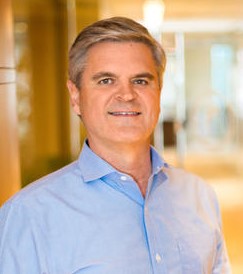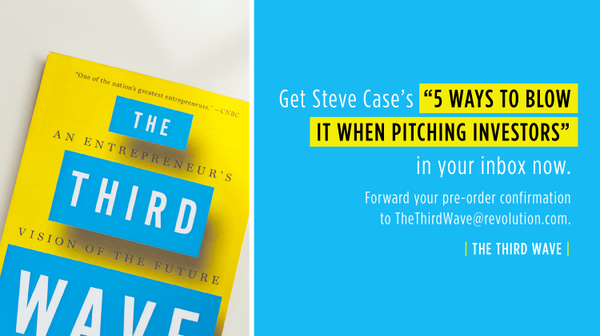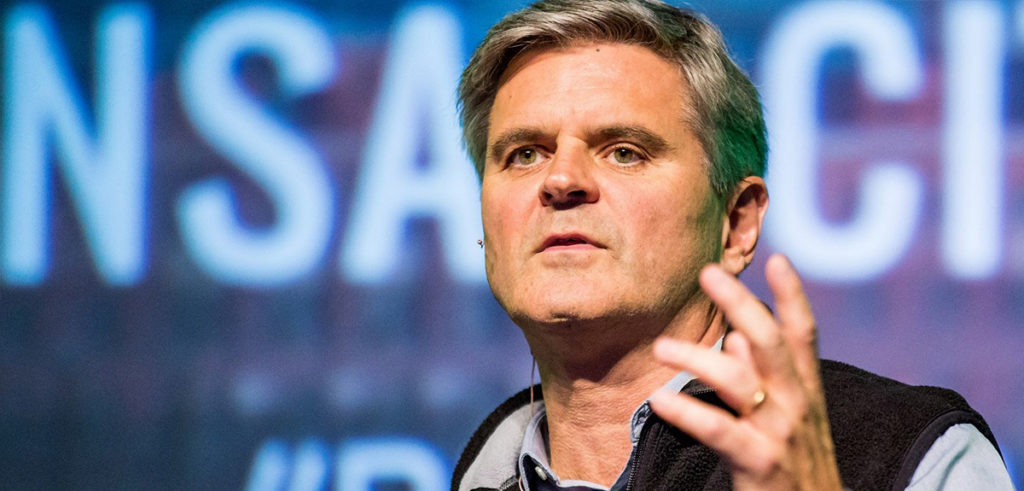Steve Case, an AOL founder and now currently the top executive at Revolution Ventures, has a new book called The Third Wave. In it, he explores the Third Wave of the Internet, and how entrepreneurs from around the globe will transform everything from health, education, transportation, energy, and food using this technology.
Case was instrumental in laying the foundation for the First Wave of the Internet, which became mainstream (in part) thanks to America Online (AOL). The Second Wave saw companies like Google and Facebook build on top of the Internet to create search and social networking capabilities, while apps like Snapchat and Instagram leverage the smartphone revolution.
The Third Wave promises to change our lives beyond social and communication. And both virtual reality and augmented reality will be part of this latest paradigm shift. Case talks to [a]listdaily about emerging technologies, and the globalization of entrepreneurship, in this exclusive interview.
 What similarities do you see with companies laying the groundwork for virtual reality social interactions to the early days of the Internet?
What similarities do you see with companies laying the groundwork for virtual reality social interactions to the early days of the Internet?
We first looked at VR probably 30 years ago. VR is an example of something that we will see more of in the Third Wave, which was an interesting initial technology. It just took some time to be refined. The progress we’re seeing now is significant, but I’m sure there will still be a number of years ahead before it really gets mainstream adoption. VR is an example of something that we saw in that First Wave, where things generally took a while to get to the point where they really were ready for prime time .
We did a partnership at AOL in 1986 with George Lucas’ Lucasfilm Corporation to create the first graphical multiplayer online game called Habitat. It was at the time for a Commodore 64 computer with 300-bit modem. It was pretty basic and Lucasfilm had the tech for graphics. Even back then you could see the potential for the idea, but it’s taken some time to make those ideas a reality in a way that lots of people can access them.
What role do you see VR playing in the short term now that we are seeing huge companies like Facebook and Google investing a lot of money in this technology?
It’s significant because there’s now a critical mass of companies, whether it be Facebook or Samsung or others, that are doing a number of different things in a significant kind of way toward really tipping the scale and introducing this technology to a large audience. It’s also great to see one of the themes in the Third Wave is that interesting tech companies are emerging in places that would surprise people. For example, Magic Leap is in Fort Lauderdale, Florida. It shows that entrepreneurship is regionalizing and that’s a positive.
Samsung has over 1 million Gear VRs and Google over 5 million Cardboards out there. What role do you see mobile VR playing in this new ecosystem?
With Samsung, my guess is it will take a few fits and starts in terms of tweaking the products, figuring out the right way to get the price points in order, and the right way to create the platforms with a broad range of developers and their ecosystems before something gets broad adoption. But clearly what’s happened in the last year would suggest that after three decades of talking about VR, this upcoming decade will see a shift from it being a concept to a reality, from being just a vision to being something that really is being executed. My guess is some of that will be applications that are consumer related, and some of those will be more enterprise related.
We’re also already seeing at the business level, augmented or mixed reality being used by companies today with devices like Microsoft HoloLens and Epson Movario. What role do you see that technology playing in the Third Wave and the future of the Internet?
It’s going to be extremely important, and [AR] has the potential to be even more important than the VR side of things, particularly in some of the institutional enterprise applications in healthcare for example, or a lot of different places where initial pilots are being tested out. It could have a very significant impact. The areas that are ripe for significant disruption in the Third Wave are healthcare, education, and transportation. So exactly how they come to market, exactly which ones are successful, exactly how they continue to evolve, time will tell, but I have no doubt that they will be important.

Magic Leap is based in Florida. What are the benefits of having startups and entrepreneurs create things outside of the Silicon Valley bubble, which is a bit removed from the real world?
Yeah, I think that’s fair, and to be candid, I’m right now sitting in Silicon Valley, having spent the day at Google because they have an initiative called Google for Entrepreneurs that supports entrepreneurs in cities around the country like Raleigh-Durham, Minneapolis, and Chicago. I was a judge at their Google Demo Days, trying to expose entrepreneurs from these emerging tech cities to investors in the Silicon Valley area. I did a talk at Google headquarters, so I have great respect for Silicon Valley. I continue to be impressed by the pace of innovation, and the fearless culture of the willingness to invest in what some people think are crazy ideas that turn out to be great, change-the-world ideas. I’m actually bullish on Silicon Valley, but at the same time, I think there is not enough recognition that there are great entrepreneurs building great companies all across the country, and indeed all across the world.
Part of my argument with this book—and my Rise of the Rest initiative that we’ve been doing for the last several years through bus tours around the country to a couple dozen cities—is to shine a spotlight on the great entrepreneurs building great things, and trying to drive more capital towards them. My guess is it will not just lift up some of these communities and drive more job creation, economic growth, and general civic vitality, but also will be the source of a lot of innovation. People who are closest to the problem are most likely to come up with the right solution.
Are there examples of this in companies you’ve invested in?
We’ve invested in a couple of companies doing some interesting things with solar in rural villages in Africa. They’re basically addressing the fact that there is no electricity grid in much of Africa, and that’s not something that people sitting in Silicon Valley are aware of or have a personal understanding of. In the Third Wave, some of the innovation is in agriculture technology—AgTech is real common in Silicon Valley—but I’ll bet a lot of innovation comes in places like Louisville, which has a farming culture, or St. Louis where Monsanto is based—the largest AgTech company in the world.
How will this impact the future of startups?
People will realize that innovation and expertise are already coming from more broadly dispersed partnerships with some of the incumbents in the Third Wave. Many of those incumbents are not in California, New York, or Massachusetts, even though last year 75 percent of venture capital went to California, New York, and Massachusetts. It will result in more insight to create more interesting companies that have more impact in terms of different products and services that can improve our lives and will, in the process, lift up more communities and drive more job creation. That’s not to say that ten years from now Silicon Valley won’t still be great. In fact, it probably will continue to be the leader of the pack. But you’ll see a broadening of, and a diffusion of, innovation both regionally within the United States and globally around the world.

